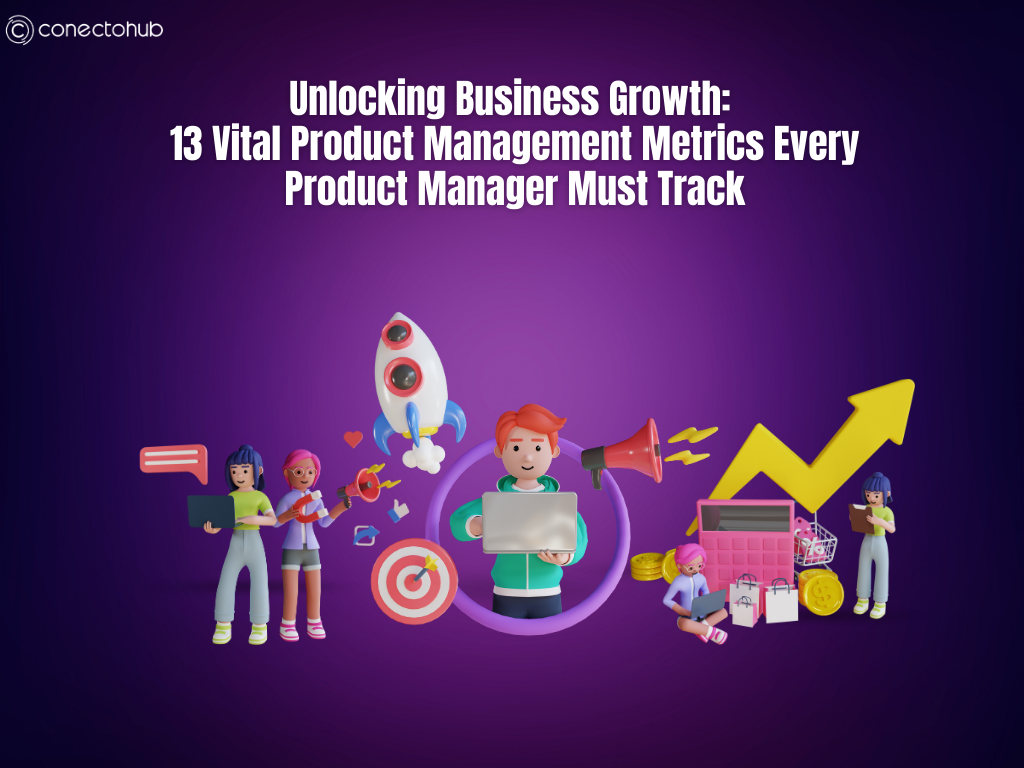
Product management is a complex and challenging field. A successful product manager must wear multiple hats, including those of a strategist, a marketer, and a data analyst. To thrive in this role, product managers need to track key metrics that help them make data-driven decisions. In this blog post, we’ll discuss 13 key product management metrics that every product manager needs to track and provide five effective strategies to improve them.
I. The Importance of Data-Driven Product Managers
Data is the foundation of successful product management. A data-driven product manager has a deep understanding of their customers and their needs, which allows them to make informed decisions that drive business growth. By tracking key metrics, product managers can identify areas for improvement, make data-driven decisions, and measure the success of their products.
II. Metrics That Matter in Product Management
- Monthly Active Users and Daily Active Users (MAUs / DAUs): These metrics track the number of users who engage with your product on a monthly or daily basis. MAUs and DAUs help you understand user engagement and can be used to identify areas for improvement.
- Customer Conversion Rate: This metric measures the percentage of users who complete a desired action, such as making a purchase or signing up for a trial. A high conversion rate indicates that your product is meeting customer needs.
- NPS & CSAT Score: The Net Promoter Score (NPS) and Customer Satisfaction Score (CSAT) are both measures of customer satisfaction. NPS measures how likely your customers are to recommend your product to others, while CSAT measures overall customer satisfaction with your product.
- Customer Lifetime Value (CLTV) or LTV: This metric measures the total value of a customer over their lifetime. CLTV helps you understand the value of your customer base and can be used to identify areas for improvement.
- Customer Acquisition Cost (CAC): This metric measures the cost of acquiring a new customer. By tracking CAC, you can identify areas where you can reduce costs and optimize your customer acquisition strategy.
- Monthly Recurring Revenue (MRR) and Annual Recurring Revenue (ARR): These metrics track the amount of revenue generated by your product on a monthly or annual basis. MRR and ARR help you understand your product’s revenue stream and can be used to identify areas for improvement.
- Session Duration: This metric measures the amount of time users spend on your product during a single session. By tracking session duration, you can identify areas where users may be getting stuck or disengaging.
- Retention Rate: This metric measures the percentage of users who continue to use your product over time. A high retention rate indicates that your product is meeting customer needs and keeping them engaged.
- Churn Rate: This metric measures the percentage of users who stop using your product over time. By tracking churn rate, you can identify areas where users may be getting frustrated or disengaged.
- Net Promoter Score (NPS): This metric measures how likely your customers are to recommend your product to others. A high NPS indicates that your customers are satisfied with your product and are willing to recommend it to others.
- Customer Satisfaction Score (CSAT): This metric measures overall customer satisfaction with your product. A high CSAT indicates that your customers are satisfied with your product and are likely to continue using it.
- Trial to Paid Conversion Rate: This metric measures the percentage of users who convert from a free trial to a paid subscription. By tracking this metric, you can identify areas where you can improve your product offering and increase conversion rates.
Here is a table with the 12 metrics and their formulas:
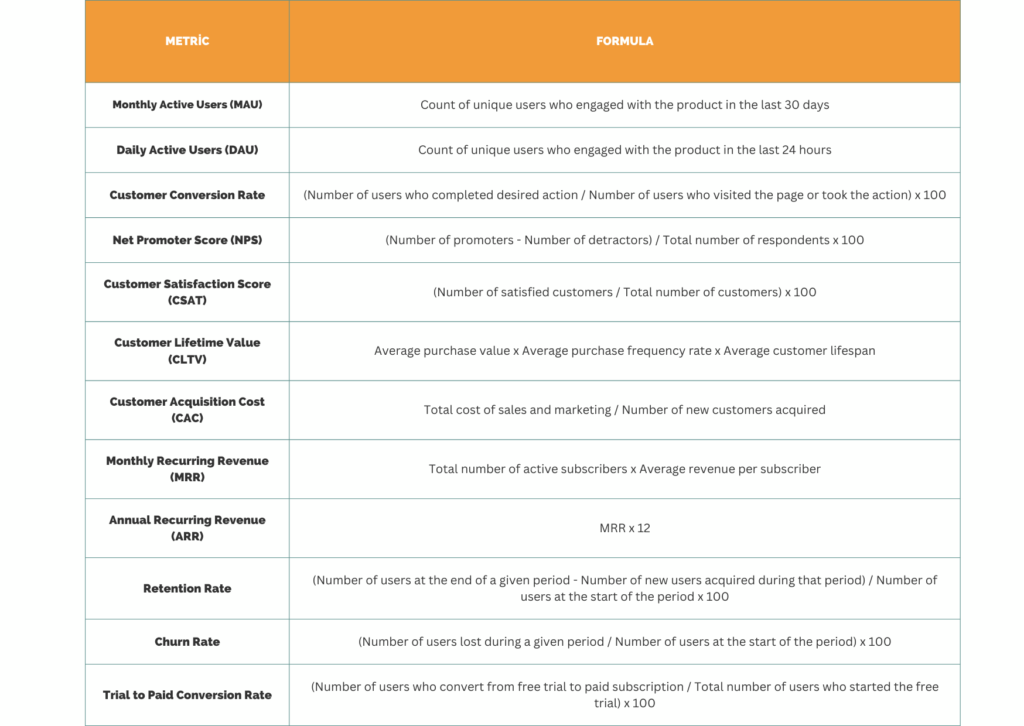
These formulas can be used to calculate the respective metrics and track them regularly to make data-driven decisions and improve product performance.
III. Driving Product Success: Why Product Managers Need Both OKRs and KPIs
Product managers should use both Objectives and Key Results (OKRs) and Key Performance Indicators (KPIs) to effectively measure and improve their product’s performance.
OKRs provide a framework for setting clear goals and objectives that are aligned with the company’s overall strategy. They help product managers focus on outcomes rather than outputs and prioritize initiatives that will have the most significant impact on the product’s success.
On the other hand, KPIs are specific, measurable metrics that track progress towards achieving those objectives. They help product managers measure performance and identify areas for improvement. KPIs can provide insights into how well the product is meeting customer needs, how effectively the team is working, and where resources should be allocated to achieve the desired outcomes.
Using both OKRs and KPIs ensures that product managers have a comprehensive understanding of their product’s performance. OKRs provide a strategic framework, while KPIs provide specific metrics to track progress towards achieving those objectives. By leveraging both, product managers can measure progress, make data-driven decisions, and continuously improve their product.
Need more OKR examples for your business? Reach more OKR Examples
New to OKRs? Start with the OKR fun course**
Also learn more about OKR and Agile processes How OKR and Agile Can Work Together
IV. Maximizing Your Product to Success: The Benefits of Linking Your KPIs and OKRs with Your Product Roadmap
A product roadmap is a visual representation of a product’s strategic vision, outlining the goals and initiatives that will drive its success. It is a powerful tool for product managers to communicate their product’s vision to stakeholders and team members, align the team around common goals, and prioritize initiatives based on their strategic importance. To align your product roadmap with your goals, you need to start by defining your product’s objectives and key results (OKRs) and breaking them down into smaller initiatives that can be tracked on the roadmap. Each initiative should be assigned a priority and timeline based on its impact on the product’s success and resources required to achieve it. By aligning your product roadmap with your goals, you can ensure that your team is focused on the most critical initiatives and that everyone is working towards a shared vision for the product.
- Alignment: By linking your KPIs and OKRs with your product roadmap, you ensure that all initiatives are aligned with your business goals and product strategy.
- Prioritization: Connecting KPIs and OKRs with your product roadmap helps you prioritize initiatives based on their impact on business outcomes, ensuring that you focus on the most critical tasks.
- Data-Driven Decision Making: By tracking KPIs and OKRs on your product roadmap, you can measure progress towards achieving your goals, identify areas for improvement, and make data-driven decisions.
- Transparency: Connecting KPIs and OKRs with your product roadmap provides transparency across the organization, ensuring that everyone is aware of the product strategy and how it aligns with business objectives.
- Accountability: By linking KPIs and OKRs with your product roadmap, you establish accountability and ensure that everyone is working towards achieving the same goals.
In summary, connecting your KPIs and OKRs with your product roadmap offers numerous benefits, including alignment, prioritization, data-driven decision-making, transparency, and accountability. By leveraging these benefits, product managers can effectively manage and lead their product teams to achieve their desired outcomes.
How to do that?
ConectoHub is a platform that can help product managers align their product roadmap with their goals by providing a suite of tools designed to streamline the product management process. Here’s how you can use ConectoHub to align your product roadmap with your goals:
I. Define Your Objectives and Key Results (OKRs):
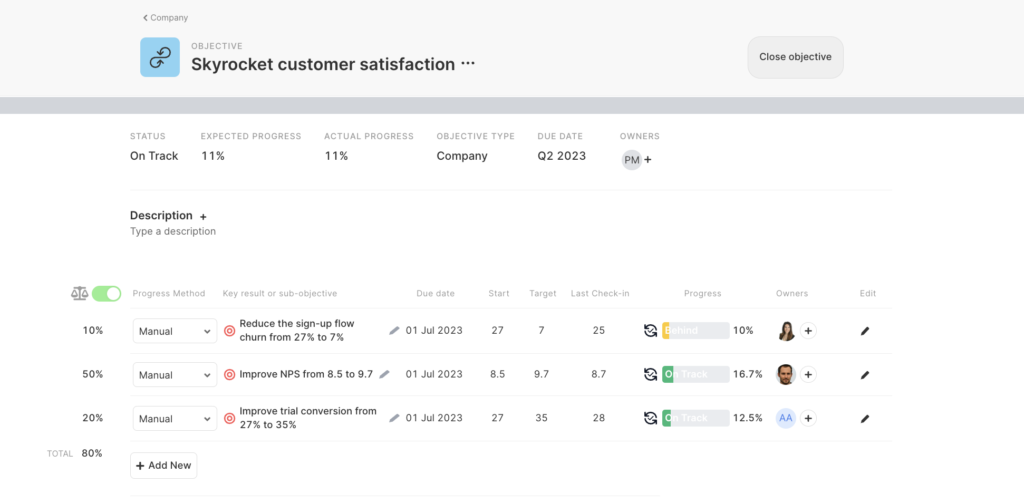
By using ConectoHub to align your product roadmap with your goals, you can streamline your product management process, improve collaboration with your team, and achieve your desired outcomes.
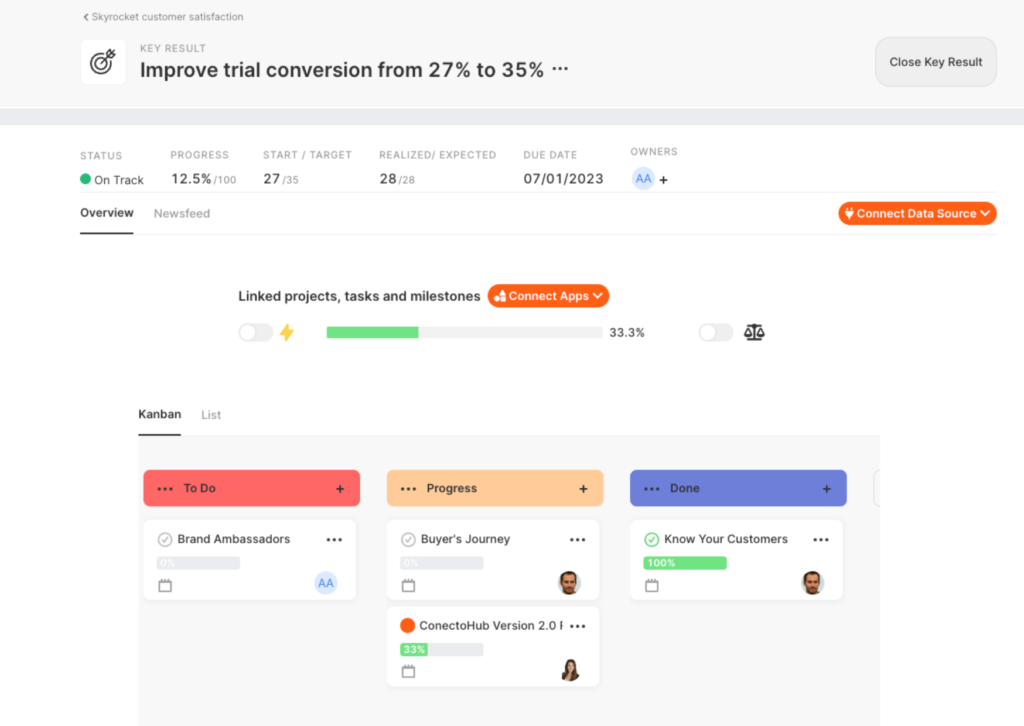
To increase efficiency of your operations, ConectoHub focuses on data and process optimization. Its Insightboards provide a comprehensive view of your organization’s performance, while performance and progress reports help you track ongoing progress.
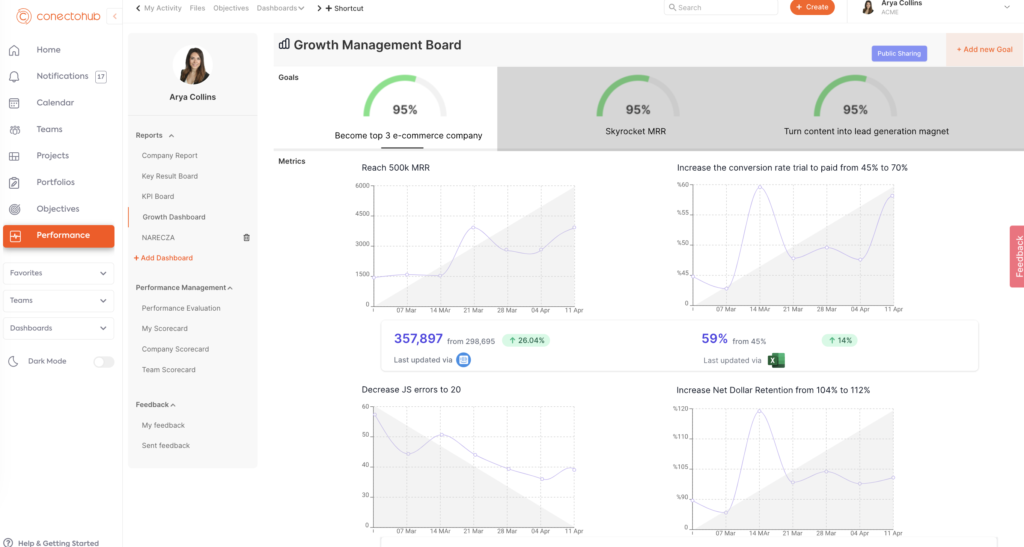
The key to scale is being able to collect, view and analyze all the relevant data in one place. Without both sides being represented, it’s impossible to really understand how the KPIs balance out. ConectoHub has made it a priority to build a solution that supports fast growing companies in being able to manage their strategy and daily execution from one platform and see every detail of their company instantly.
- With OKR System supported by AI, lead your company, set your objectives and get best Key Results
- Manage your business as usuals with KPIs.
- With automated OKRs and KPIs you can entegrate your goals with business metrics like sales, profit, etc. from +5000 platforms like Hubspot, Google Analytics, Excel etc. and see the progress automatically.
- Create performance system for your organisation. Give different weight to your goals. Finally access the performance of all the hierarchies in the organisation on the basis of work output instantly.
- ConectoHub provides a variety of ways to personalize your dashboard
- Manage your daily operations on the same platform where you are managing your goals.
If you want to see how fast growing companies from 14 countries scale fast with ConectoHub, let’s have a quick chat
